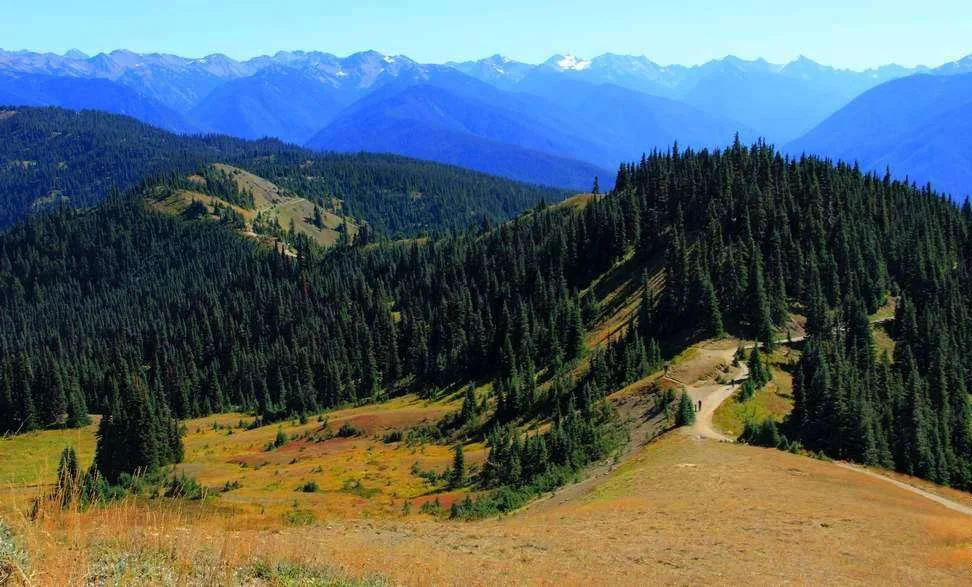 |
Olympic National Park (Washington State, USA) - exact location, places of interest, inhabitants, routes, map and photos.
Here mountains and the ocean meet, clear rivers and dense forests, severe snow-capped peaks and delicate alpine flowers. Olympic National Park occupies most of the peninsula of the same name and extends to the Canadian border. Its vast territory unites three natural communities: in the center of the reserve there are the Olympic Mountains with glaciers and subalpine meadows, wild beaches stretch along the Pacific coast, and ancient rain forests, shrouded in fog, grow in the west. The flora and fauna of the reserve is just as diverse: it has become home to 300 bird species and almost 1,500 plant species.
 |
| Olympic National Park |
What to see
Olympic National Park is an incredible combination of natural landscapes: Lake Quinolt is surrounded by mountain peaks and a fabulous rain forest with mossy trees, Sol Duke Falls rustles in dense thickets, and a colorful floral carpet stretches at the foot of the Hurricane Range.
 |
| Olympic National Park |
One of the most beautiful places on the coast of the ocean is called the Lost Coast: the sandy beach is covered with trunks of fallen trees, whitened by the water and the sun, rocks of bizarre shapes protrude from the water.
 |
| Olympic National Park |
In coastal waters, mollusks of various shapes, colors and sizes are found, whales and dolphins, seals and sea otters frolic in the ocean, and Pacific salmon enter rivers. Raccoons, beavers and minks live in the lowlands; deer and elks, cougars and bears roam in the mountain valleys. A rare snow goat lurks high in the mountains.
 |
| Olympic National Park |
15 species of animals are endemic to the national park. Among them are the Olympic marmot, the Olympic ermine, the Olympic grasshopper, and the Olympic salamander.
 |
| Olympic National Park |
People have lived in these amazing places for a long time: 12 thousand years ago, Indian tribes settled on the peninsula. You can still visit the Indians today - there are several reservations in the reserve.